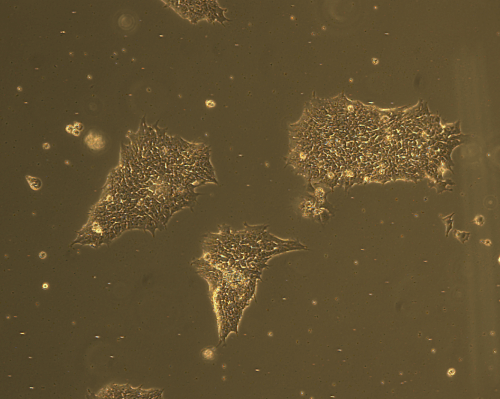This is evident from a research collaboration between the Hebrew University and Harvard University. The leader of the research, Yishai Avior from the Hebrew University, states: "It is very important to locate these mutations and understand their effect before any future use of stem cells in the clinic and in research." An article on the subject was published in the world's leading journal for stem cell research

For years, stem cells have been at the forefront of scientific research due to their ability to be an endless source of tissues and organs for transplants and disease treatment. Already today, sorted embryonic stem cells are in clinical trials in the hope of treating diseases such as diabetes and blindness. Naturally, the embryonic stem cells, which originate from a fertilized egg that is several days old, differentiate into each and every type of cell in the human body. However, embryonic stem cells have also been defined in the past as a "double-edged sword", since in addition to their promising properties, when used in the laboratory, they form tumors in their unsorted form, and may form tumors if they are transplanted in this way into humans as well.
A new study to be published in the October issue of the world's leading journal for stem cell research, Cell Stem Cell, found that the similarity between embryonic stem cells and cancer cells may be even greater than previously thought. In a collaboration between the laboratory of the head of the Azrieli Center for Stem Cells and Genetic Research at the Hebrew University, Prof. Nissim Benvanisti, and Prof. Kevin Agan from Harvard University, and led by research student Yishai Avior from the Hebrew University, it was found that stem cells spontaneously collect cancerous mutations that were previously found in human tumors. In contrast to previous studies, which found similarities in changes in whole or partial chromosomes between the stem cells and cells derived from tumors, the new study performed a genomic analysis of single bases in all the genes involved in cancer, and found recurrent point mutations in more than 20 of them. In other words, cells carrying these mutations that will undergo differentiation and be transplanted into patients, may resemble cells of cancerous tumors whose immediate effect is unknown.
The research work included genomic analysis of hundreds of stem cell samples from dozens of laboratories around the world. While two-thirds of the cells carried no such mutations at all, about one-third of the cells contained at least one mutation previously found in human cancerous tumors and appearing during the growth of the cells in the laboratory. It was also found that certain culture conditions that allow the cells to be more similar to a human embryo, increase the rate of mutation accumulation in a way that is closely related to the chemicals in which the cells grow. It seems that from now on, clinical trials with embryonic stem cells will also have to include analysis of point mutations, before using them in patients.
The effect of the cancerous mutations is not only limited to the future use of embryonic stem cells in humans, but also to their use in the laboratory. Findings that were discovered by using stem cells with a cancerous mutation may confuse the research, since the results obtained from them do not simulate natural processes - but processes similar to the disease. Until now, cancer mutations of this type have not been tested in stem cells, and therefore it is possible that some of the results obtained using them in the past were affected by those exact mutations.
"It is important to remember that despite our findings, most of the stem cells we tested did not carry cancer mutations at all and continue to be a tremendous potential source for cellular medicine," emphasizes researcher Yishai Avior, "however, it is very important to locate these mutations and understand their effect before any future use of stem cells in the clinic and in research". The article attracted a lot of attention already last June at the international stem cell conference held in Los Angeles.
This research was made possible mainly thanks to the Klor Foundation, the Azrieli Foundation and the National Science Foundation.

One response
My name is Shmuel Ben Tovim, I have Parkinson's and today is the first time I have seen a study that mentions an attempt to find a cure for Parkinson's disease. As of today, the only solution to solving the disease is to administer DBS